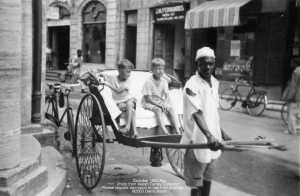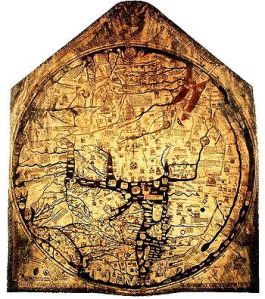ETIC Reading Group 19th March 2014
‘Nostalgia, Chaos and the City’
School of The Arts Room G06b: 2-4pm
ETIC Project Fellow Sujaan Mukherjee (Jadavpur University, Calcutta)
ETIC PhD Researcher Cleo Roberts (University of Liverpool)
Catherine Eagleton (Head of Asian and African Studies, British Library)
The ETIC Reading Group Seminar was introduced by Dr Ian Magedera. Discussing the theme of the session, Magedera welcomed Catherine Eagleton (British Library) and her chosen text, William Cunningham Bissell, ‘Engaging Colonial Nostalgia’, American Anthropological Association Vol.20, No.2 (May, 2005) Available here: ColonialNostalgia. Taking Zanzibar’s historic Stone Town as its case study, the article engages with a commonly-encountered and yet rarely analysed phenomenon – colonial nostalgia and its relationship to the urban environment – that Zanzibar town shares with some Indian cities. Eagleton commented on the problematics of gaining critical distance from a site and objects over time, and through her experience as a curator she was interested in the tension between archival preservation, memory and loss, in this example as they could be understood through looking at residents’ expressions of nostalgia about the urban environment.
Extending the discussion to museums, monuments, and the experience of the city by tourists and residents today, Eagleton commented that the memorialisation of some places, objects, or themes, ran the risk of over-romanticisation. Roberts spoke of her interest in cartographic objects as fixing a mediated reality. Zanzibar’s location in the Indian Ocean, hub of nineteenth century trade between East and West, was of interest to Das and demonstrative of water’s importance as a spatial boundary which changes the perspective of a city. In relation to this, Eagleton drew attention to the colonial mapping of Zanzibar in Bissell’s book, Urban Design, Chaos and Colonial Power in Zanzibar (2010). Divided by a creek, the two parts of the town were treated by colonial administrators and mapmakers as very different to each other, a divide that persists in the current tourist routes in and around the town.
Discussion moved to Bissell’s paper and the facets of nostalgia. Magedera was interested in the possibility of ironic nostalgia. He valued Bissell’s criticality and the reflexivity of the text. The anthropologist’s perspective was appreciated for his ability to demonstrate the ways memory is inscribed onto an urban landscape. Zanzibar demonstrated the physicality of nostalgia in its crumbling colonial buildings. Citing Susan Stewart (1984) Das spoke of the operations of nostalgia. Drawing on Bissell’s discussion of Orientalist Desire, Eagleton detailed literary sources such as Memoirs of an Arabian Princess, Salamah bint Saïd (1907) that presented ‘authentic’ voices, albeit voices that are now being reconstructed within a nostalgic frame. The question of visual nostalgia was detailed by Mukherjee in the dress of court officials in Calcutta.
Calcutta’s market culture was detailed by Sujaan Mukherjee. The Barabazar and New Market sites were read as controversial spaces with a mixed heritage of ownership. Colonial involvement in the regions had generated a complex social lineage. Building on recent fieldwork, Mukherjee presented his work on Naskar Para Bazaar. Extending Professor Jaaware’s (Department of English, Pune University) theories on inscribed and un-inscribed use of objects depending on their level of sophistication, as discussed in a lecture titled “The Humanities and Technicity in Time of Technologies” Jadavpur University, December 2013, the site was presented as an adaptive space in the city made malleable by its users. In contrast to the prescribed behaviours of Calcutta’s malls, the market was a space in the city formulated by a mixed demographic of users.
Cleo Roberts concluded the session presenting research on representations of the Ganges during the Hellenistic and Medieval period. Talking through a series of images, Roberts detailed the river’s use as a site of cross-religious imagining. Buddhist cave drawings, Christian mosaics, maps and Islamic manuscripts demonstrated the site’s flexibility. Greek and Roman literary sources such as Herodotus were utilised to corroborate the impression of the Ganges as a site of majesty. Eagleton and Das commented on the use of encyclopaedias as valuable sources. Magedera drew attention to India Cross-Referenced: Western Encyclopaedias and the Word “India” 1728–1886’, in Delmas Catherine and Chitra Krishnan (eds), Stories/Histories of India (2009).


